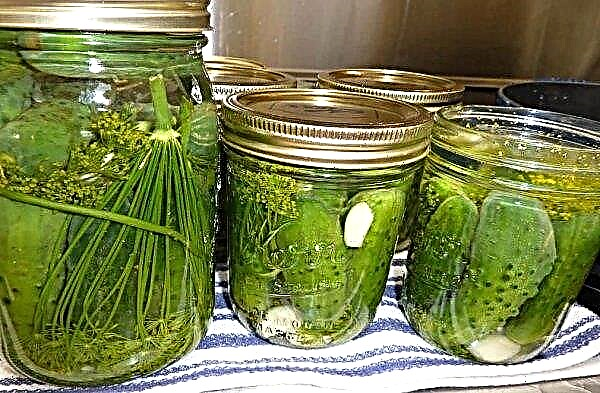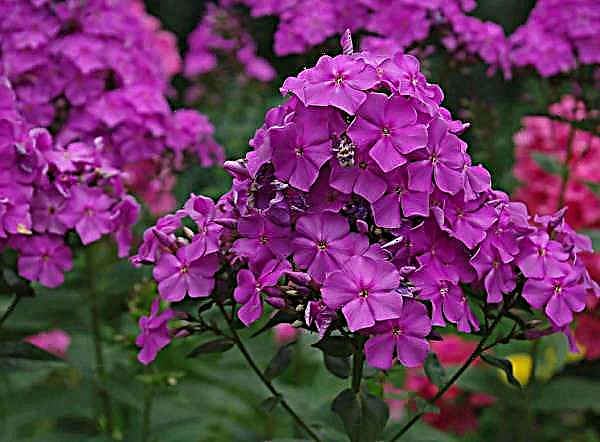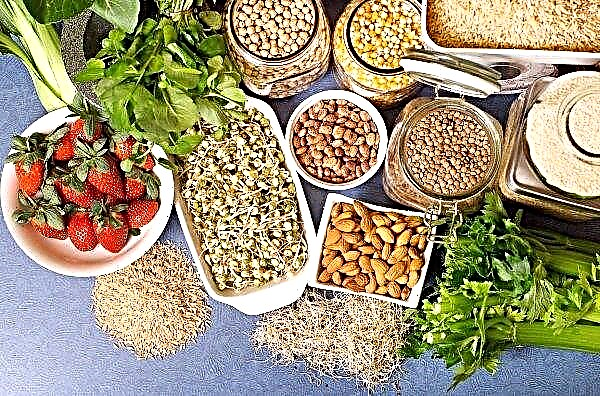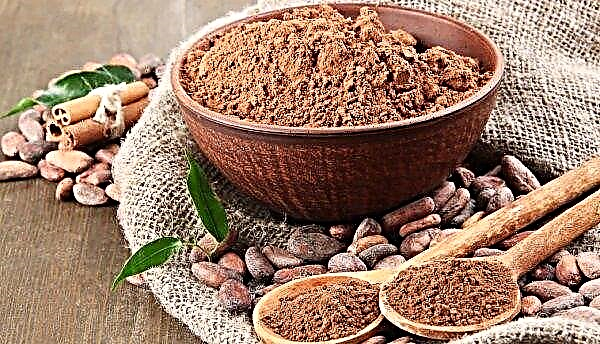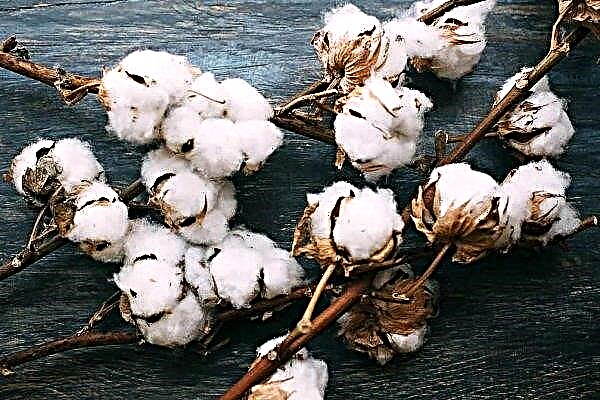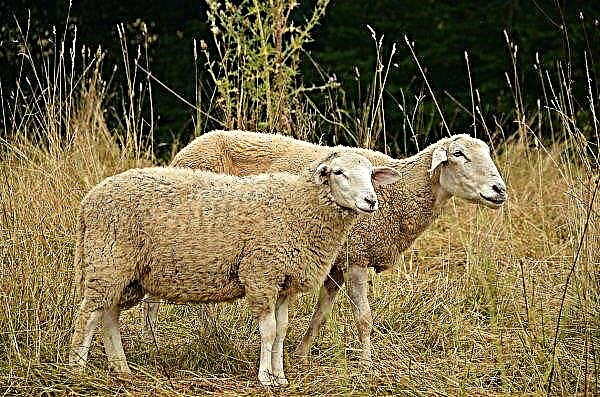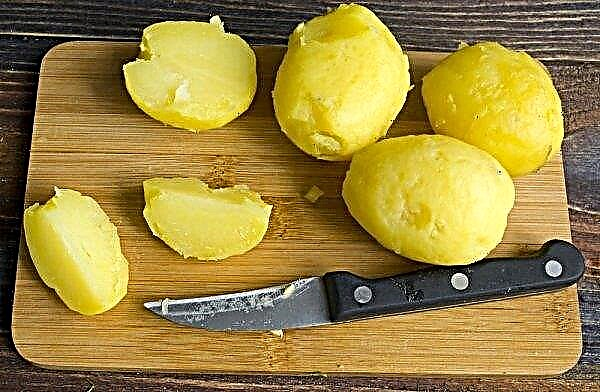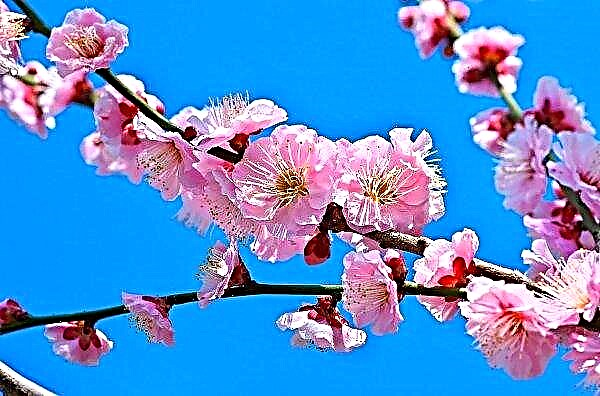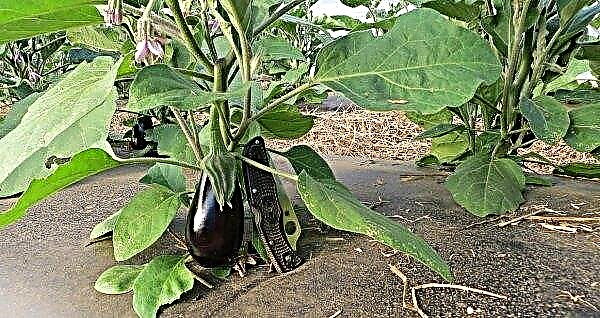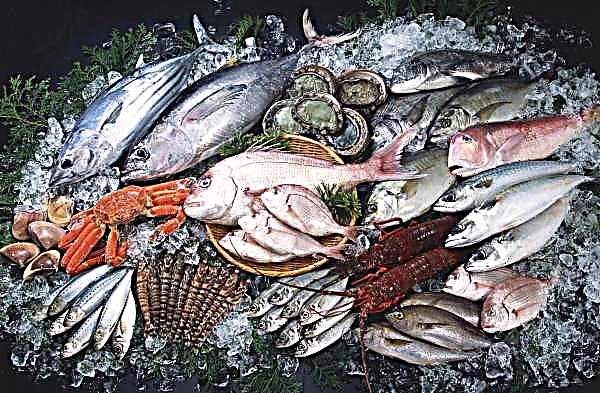One of the most exotic species of indoor plants are palm trees, among which the most common Howster Forster, or Forsterian. The plant is often used to decorate the halls of hotels and office premises, although you can grow this flower in an ordinary city apartment. The article presents the characteristics of Howster Forster, the characteristics of its planting, cultivation and reproduction, as well as the necessary indoor climate conditions for the flower.
General description of the plant
Under natural conditions, forsterian grows on the islands of Oceania and Australia. The plant can reach a height of 15 m, but grows slowly, adding only a few leaves per year.
Did you know? In places of natural growth of palm trees, locals use their green leaves to make roofs of houses, hats and clothes.
Detailed description of Howster Forster:
- This evergreen plant belongs to the Palm family.
- The height of a palm tree when grown indoors rarely exceeds 2 m. The plant has one smooth stem intercepted by leaf rings.
- The leaves of the palm tree are dark green, have a feathery shape. Each leaf is located on an elongated petiole 1–1.5 m long and contains several long linear lobes.
- In the natural environment, the Hovea flowering period falls in November or December, but when grown in a room, the palm tree does not bloom.
- Inflorescences consist of yellow flowers, have a racemose shape and are formed in the axils of the lower leaves. Their length can reach 0.8–1 m.
- The fruit of the palm is a small ovoid ball of a reddish color about 4 cm long.

Growing Features
Howea Forster belongs to unpretentious indoor plants, so it can be grown even in an ordinary city apartment. For normal palm growth, moderate lighting, comfortable warmth and suitable soil are required. Forsteriana grows slowly, so it does not require frequent transplants, but if desired, it can be successfully propagated at home.
Necessary conditions for growing
There is no need to create a specific microclimate for Howster Forster. It perfectly survives at normal room temperature and sufficient humidity, grows well in partial shade. The rest of the article lists the basic requirements for forsterian cultivation.
Important! When buying Howster Forster in winter, it must be transported correctly - wrap the plant in several layers of paper and film and be as free as possible with a palm tree in the cold.
Lighting
Howea Forster grows well with moderate amounts of sunlight. It belongs to shade-loving plants, but adult specimens can be grown in moderately bright sunlight.
Basic requirements for lighting a flower:
- the indicator of illumination in the room can vary from 35 to 80%;
- it is recommended to place a palm tree near windows facing north or northeast;
- in the southern rooms, the hove should be placed further from the window so that direct sunlight does not cause burns to the leaves;
- young plants under 5 years of age should be shaded from bright sunlight;
- in conditions of short daylight hours, it is recommended to additionally place a palm tree under artificial lighting sources;
- for Howster Forster to develop symmetrically, the pot with a palm tree must be periodically rotated, providing access of light to all sides of the plant.
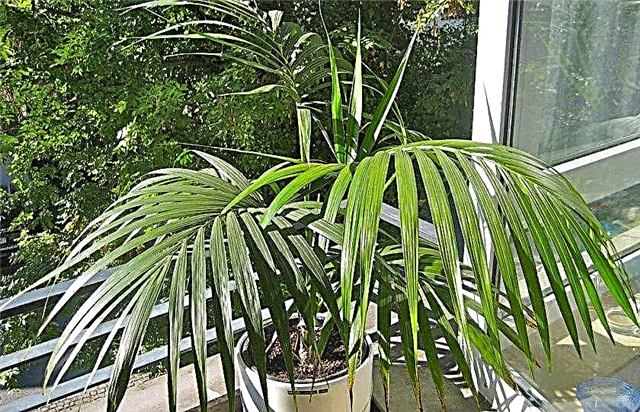
Humidity and temperature
Howe Forster is a thermophilic plant, although it can tolerate a short-term decrease in temperature. In this case, it is necessary to maintain a suitable humidity, since in warm rooms with very dry air, the hovea may be attacked by a spider mite.
Basic requirements for microclimate conditions:
- in summer, the optimum air temperature is +20 ... + 25 ° C;
- ideal air humidity for a flower - 60–70%;
- in the heat and during winter cultivation in a warm room, you need to spray palm leaves with water 2 times a day;
- in summer, you can take out a container with forsterian on the street or an open balcony, placing it in partial shade;
- optimal air temperature in winter - at least + 18 ° С;
- if in winter the temperature in the room with the flower is below + 18 ° C, then the spraying of the leaves is stopped;
- It is not recommended to hold the palm for a long time at a temperature below + 12 ° C.
Important! Adult forsterian can survive a drop in temperature to 0 ... + 5 ° C, but only for a short period of time.
Landing soil
The palm tree is not very demanding on the nutritional composition of the soil, but it grows best in nutritious loamy soil or shop soil for indoor flowers. Before the landing, it is necessary to lay a layer of good drainage on the bottom of the tank.
The substrate for growing palm trees may have the following composition:
- 2 parts of turf land;
- 2 parts of humus-sheet earth;
- 1 part peat;
- 1 part of sand;
- 1 part rotted manure.
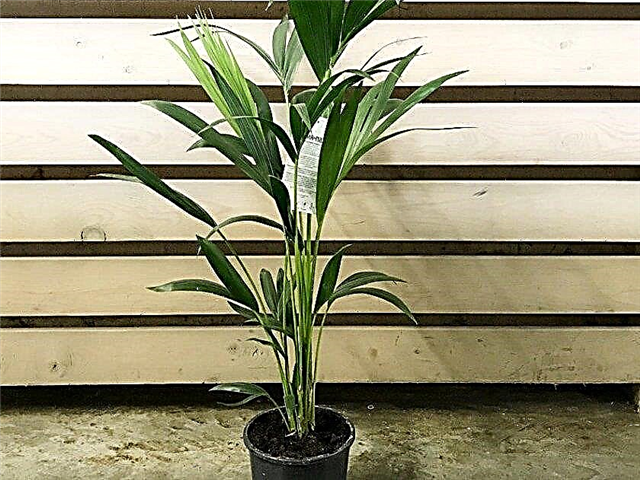
How to transplant Forster Howe
For better growth, young palm trees under the age of 5 years are recommended to be replanted annually in another pot. It should correspond to the size of the Howia roots and be only slightly larger than the old capacity. This procedure is best done in April, being careful when working with palm roots.
How to plant Howster Forster in a new pot:
- Prepare a container of suitable size and lay a thick layer of drainage on its bottom.
- Carefully remove the plant from the old pot with the earth around the roots and place it in a new container. In this case, the root neck of the Howea should remain at the same level above the ground as before.
- Fill the remaining free space in the pot with soil.
Video: Howea Forester Transplant
Adult plants should be replanted only when their roots cease to fit in containers and begin to peep out of it - this happens about 1 time in 2-3 years. At the same time, the hovea is transferred to a new pot by the method of transshipment.
Large palm trees growing in large tubs do not transplant at all - for them it is enough to carry out the annual replacement of the topsoil.
Breeding
At home, Forster’s howe can be propagated by seed or by dividing the bush, but the first method is used very rarely, since the Forsterian does not bloom indoors.
Did you know? Since ancient times, the palm branch was considered a symbol of victory - it was awarded to the winners of competitions and battles.
The optimal time for plant propagation is April or May. Further in the article is a detailed description of each of these breeding methods.
From seed
You can buy planting material in a specialized store. Fresh Howea seeds have a germination rate of about 50%. Every month after harvesting, germination is reduced by 10%, and the shelf life of palm seeds is only six months.
Step-by-step instructions for growing Forster’s Howea seeds:
- Soak the planting material in clean water for 5 days, and then peel the seeds from a hard outer shell to accelerate germination.
- Prepare a soil mixture of sheet earth, perlite and vermiculite, taken in equal proportions. For sterilization, calcine the soil in the oven.
- Fill the pots with prepared soil and water it well. Squeeze the seeds into the ground by about 1 cm, without filling them with soil.
- Cover the pots with a plastic bag and put them in partial shade. The air temperature in the room with planted seeds should be +25 ... + 27 ° С.
- Every day you need to raise the bag to ventilate the seeds and irrigate the soil with water as it dries. It takes 3 to 6 months for the seeds to germinate, and the package can be completely removed only after emergence.
- When the first leaf 3-4 cm long grows on the flower, transplant the sprout into a permanent pot and put it in partial shade.
By dividing the bush
When buying a flower in a store, several stems of Forster's Howea are often placed in one flowerpot. This helps to create a lush and beautiful bush that looks beautiful in any interior. After such a plant reaches medium size, it can be divided into 2 or 3 parts and plant each of them separately.
Important! You can not plant Forster’s howe in a flowerpot that is too big - this can lead to decay of the root system of the palm.
Forster's Howia propagation algorithm by dividing the bush:
- Prepare suitable containers and soil, consisting of turf soil, humus leaf and perlite (in a ratio of 1: 2: 2).
- Carefully remove the palm from the pot and shake it lightly to remove the earthen lump around the roots. Carefully remove residual soil between the roots with your hands.
- Divide the roots into 2-3 parts manually carefully so as not to damage them. This should be done quickly so that the roots do not have time to dry out without soil.
- Lay a layer of drainage in new pots and pour a little soil. Place each of the resulting parts of the mother plant in an individual container and sprinkle its roots with earth.
- Water the planted palm trees with water, and then put them in a room with diffused light and an air temperature of +20 ... + 25 ° С.
- After drying of the top soil layer, water the plants, and also protect them from drafts. The rooting period of seedlings lasts 7-14 days.
- When the divided parts of the palm tree take root in new containers, feed them with a fertilizer solution. It should have half the concentration compared to a solution for an adult plant.
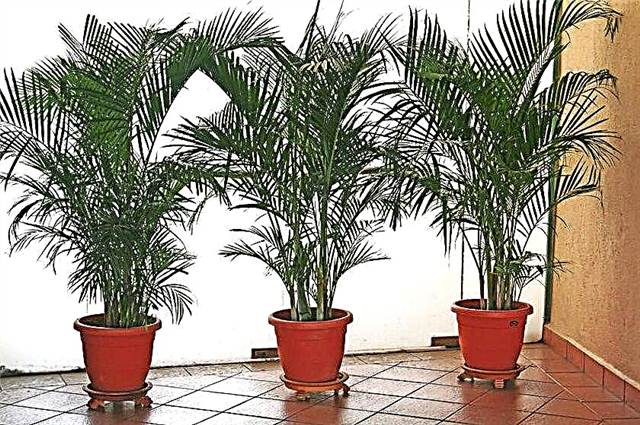
Aftercare
Caring for a palm tree at home comes down to regular and normal watering, fertilizing and periodic pruning. Performing all these actions is beyond the reach of even a novice grower and will not take much time, so it’s very easy to take care of the plant.
Watering
Despite the fact that new leaves on the palm tree grow very slowly, Forster’s howe is constantly in need of moisture. The plant does not have a clearly defined dormant period; therefore, it needs to be watered all year round, changing the irrigation intensity depending on the season.
Basic rules for watering forsteriana:Important! With excessive moisture, the tips of the leaves of the Forster hovea begin to blacken and dry out, and with insufficient watering the plant turns yellow and dries.
- you need to irrigate the flower as the top soil layer dries to a depth of 2 cm;
- For irrigation, you can use only settled or rain water at room temperature;
- waterlogging in the pot should not be allowed - this can provoke root rot;
- in summer, you need to water the plant more often so that the soil does not have time to completely dry out, otherwise this will lead to damage to the roots of the flower;
- in the heat, the leaves of the flower should be sprayed with water, and in winter, sometimes wipe them from dust with a damp sponge;
- if in winter a penumbra is observed in a room with a palm tree and is rather cool (less than +17 ° C), then the quantity and intensity of watering are reduced.
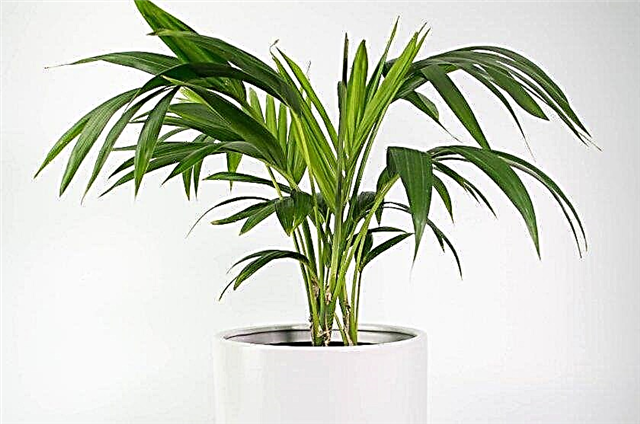
Palm top dressing
As a top dressing for Forster’s howe, you can use ready-made complex fertilizers with a balanced composition. If the soil in the pot with a palm tree has a suitable nutritional composition, then such fertilizers will be quite enough for the normal growth of the flower.
Fertilizer application rules:
- feed forsterian only from the beginning of April to the end of August;
- the frequency of fertilizing - 1 time in 12-16 days;
- as top dressing, use conventional fertilizers for indoor decorative and deciduous plants, following the instructions on the package;
- large adult palms to feed in the winter with a frequency of 1 time per month;
- after illness or transplantation, forsterian should not be fertilized for some time, so that the plant adapts and regains strength.
Did you know? Howe performs the role of a natural filter in the room - it purifies the air of harmful chemicals and saturates it with moisture.
Pruning
When grown indoors, pruning of Forster's Howe is performed only with a decorative purpose, so that the palm always looks beautiful.
This procedure is carried out using a sharp knife or scissors and is performed according to the following rules:
- yellowed and dried leaves must be removed;
- you can not cut or damage the trunk of the plant - this can cause its death;
- when pruning leaves, the cut should be done at a distance of at least 1.5 cm from the surface of the trunk;
- the total number of palm leaves trimmed per year should not exceed the number of new leaves that appeared during this period;
- dried leaves can be carefully trimmed with scissors.
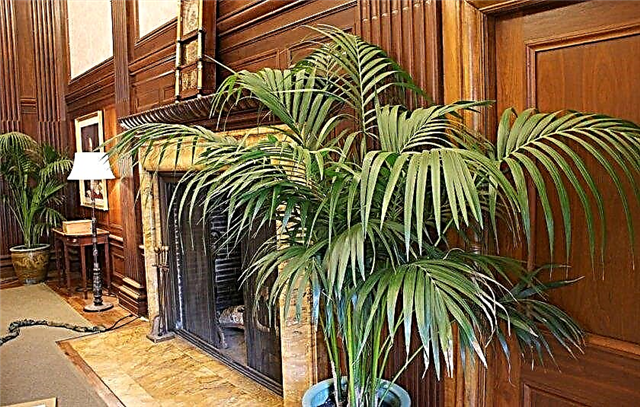
Useful growing tips
It is easy and pleasant to grow forsterian at home - a palm tree pleases with an attractive decorative look, even with minimal care.
Below are a few more recommendations for growing this plant:
- From the beginning of April to the end of August, the sun's rays are the brightest, so it is recommended to hide the palm from them to prevent sunburn.
- If yellow spots appeared on the leaves of the flower, this indicates an excess of sunlight. Damaged parts of the leaves need to be cut, and the flower rearranged further from the window.
- If an insufficient number of leaves (4-6 pcs.) Is formed on the stem of the flower, this indicates a lack of lighting.
- When the air temperature rises to + 26 ° С and above, you need to increase the humidity level so that the flower does not dry out.
- To quickly clean the leaves of a plant from dust, in the summer you can take it out in the warm rain or take a shower after covering the soil in a pot.
- To speed up the process of germination of palm seeds, you need to organize the lower heating of the pot with planted material.
- In a room with a flower, airing should be carried out periodically, but at the same time, a palm tree cannot be placed in a draft.
- Forsterian should not be poured with hard water, it is better to use boiled water for this purpose, cooled to room temperature.
- To improve the breathability of the soil, the surface of the soil in a pot with a palm tree must be periodically loosened.
You can have patience and grow Forster’s howe yourself from purchased seeds, or immediately purchase a young specimen in the store that will decorate any interior. Using the recommendations for growing palm trees listed in the article and following the rules of care, you can easily grow this exotic and beautiful evergreen tree at home.







